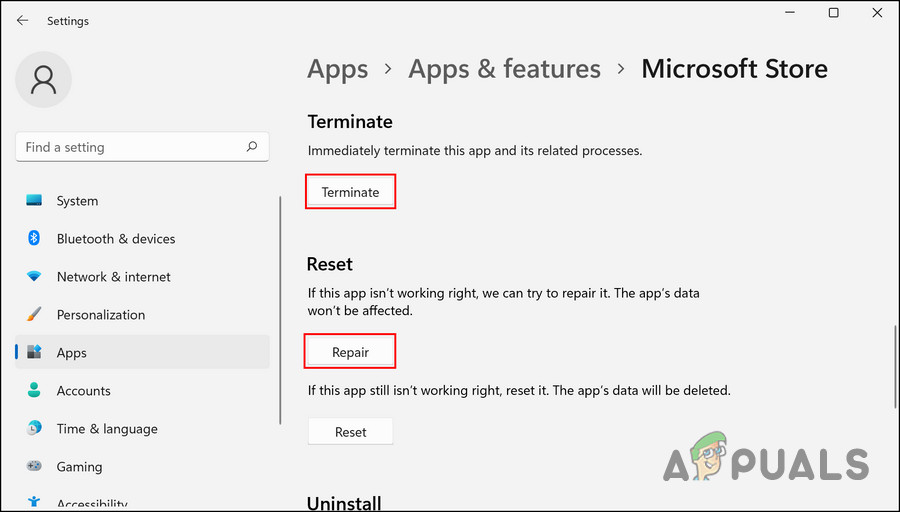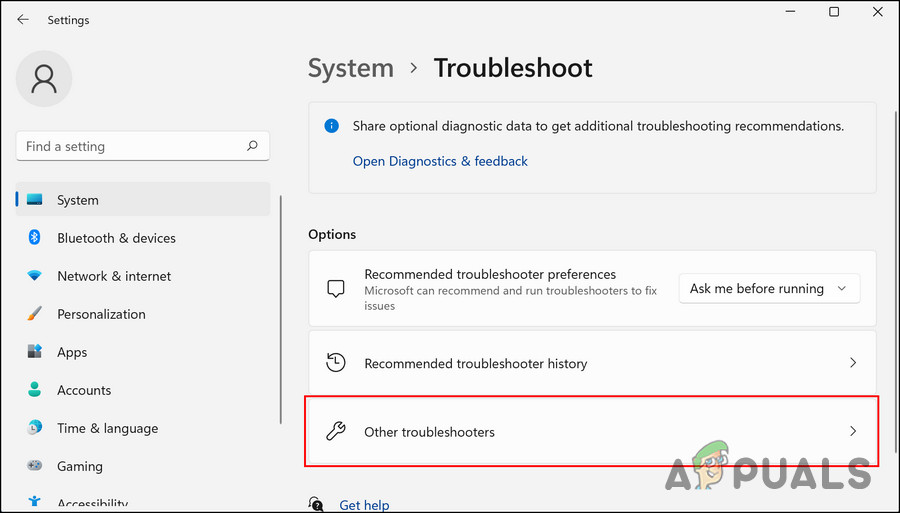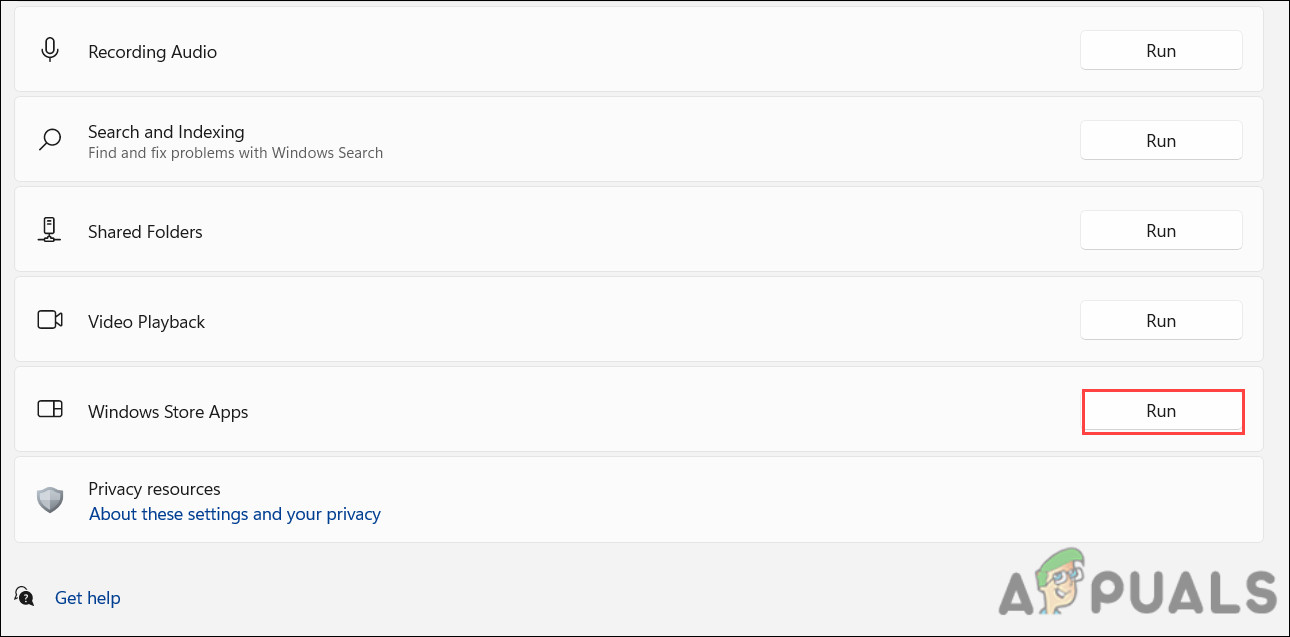Microsoft Store Updates/Downloads Stuck at 0%? Here’s the Fix!
Issues with the Microsoft Store are nothing new for Windows users, and one problem that has been recently popping up is that the Windows Store updates and downloads are stuck at 0%. This happens even when the users have a stable internet connection.

Here are a few reasons why this might be happening:
- Corrupt Microsoft Store cache – If the temporary data stored as cache files become corrupt, the Microsoft Store is likely to experience issues while performing certain tasks.
- The store is corrupt – Your Microsoft Store application might be dealing with a glitch or a corruption error. These can typically be resolved by using the built-in Microsoft Store troubleshooter designed by Microsoft.
- Time and date are incorrect – The time and date of your system should be accurate for apps to fetch certain certificates before performing tasks. If they are incorrect, the certificates will be considered invalid, leading to issues like the one at hand.
Now that we know about the potential causes, let’s have a look at the troubleshooting methods that fixed the same issue for other affected users.
1. Modify the Software Distribution Folder
The solution in this case, which worked for more than half of the affected users was modifying the Software Distribution folder in Command Prompt.
The SoftwareDistribution folder in Windows is used for temporarily storing files required for installing updates on the system. It is located in the Windows directory.
Here is how you can modify it to fix the issue at hand:
- Type cmd in the search area of the taskbar and click on Run as administrator.
- In the Command Prompt window, type the commands mentioned below and hit Enter to execute them one by one.
net stop wuauserv move "c:\Windows\SoftwareDistribution" "c:\Windows\SoftwareDistribution.old" net start wuauserv

Execute the command to modify the folder - Once the commands are executed, restart your PC.
Upon reboot, check if you can download the updates or new apps now without any problems.
2. Repair Microsoft Store
Earlier, we mentioned that corrupt temporary files or faulty dependencies could cause the issue in Microsoft Store. The best course of action if this happens is to repair the Microsoft Store using the built-in Repair tool.
Here is what you need to do:
- Open Windows Settings by pressing the Windows + I keys simultaneously.
- In the Settings window, navigate to Apps > Apps & features.
- On the next window, click the three dots next to Microsoft Store.
- Select Advanced options.
- Now, click on the Terminate button in the next window.
- Under the Reset section, click the Repair button.

Click on the Repair button
Upon completion of the process, verify that the issue has been resolved. Follow the steps below to reset the Windows Store if it doesn’t work.
- Click the Reset button in the Advanced options window.
- To proceed, click Reset again at the confirmation prompt.
- Restart your computer once the process is complete.
2. Run the Windows Store Troubleshooter
Another way of fixing the corruption issues within the Microsoft Store app is by using the built-in Windows Store troubleshooter. This troubleshooter is similar to the other troubleshooters in that it scans the system for relevant issues before reporting them.
It will suggest you relevant fixes for any problems it detects, and then apply them without requiring any input from your side as well.
Here is how you can run the Windows Store Apps troubleshooter:
- Type Windows Settings in the search area of the taskbar and click Open.
- Navigate to System > Troubleshoot.
- Click on Other troubleshooters in the following window.

Click on the Other troubleshooters option - Now, locate Windows Store Apps and click on the Run button with it.

Click on the Run button - Next, wait for the troubleshooter to scan the system. If there are any issues, it will notify you. To apply the suggested fixes, click Apply this fix.
You should now be able to update or install the Microsoft Store applications after the troubleshooting has finished.
3. Reset Windows Store Cache
Cache file corruption is another reason why Microsoft Store issues occur. A cache is temporary data that applications and programs use to retrieve data like preferences and user information more quickly in the future.
Eventually, this data can pile up and become corrupt, causing issues like the one being discussed. Because the cache files are temporary, it is safe to delete/reset them, which usually resolves the issue.
Here is how you can reset the Windows Store cache:
- Press the Win + R keys together to open a Run dialog.
- Type wsreset.exe in the text field of Run and click Enter.
The command will now execute in the Command Prompt and once it is done, the command utility will close itself. Once that is done, check if the issue is fixed.
4. Make Sure System’s Time and Date are Accurate
Another reason why you might be encountering the problem is because of the inaccurate time and date of the system.
Certain applications like the Microsoft Store check the system for relevant certificates before performing tasks. If the time or date of the system is incorrect, these certificates are rejected, causing issues like the one at hand. The solution to this is simple, as all that you need to do is correct this information.
You can go to the Settings app and click on Time & language. Head over to the Date & time section and make sure that the information here is correct.
5. Reinstall the Windows Store via Windows Terminal
Finally, if none of the above methods work for you, try reinstalling the Microsoft Store, which will reregister the app.
Here is how you can do that:
- Launch a Run dialog box by simultaneously pressing Windows + R on your keyboard.
- Type wt into the text field of the dialog box and press the Ctrl + Shift + Enter keys together to launch Windows Terminal as an administrator.
- Click Yes when the User Account Control prompts you to grant admin access.
- Now, type the command mentioned below and hit Enter to execute it.
Get-AppxPackage -allusers *WindowsStore* | Remove-AppxPackage

Uninstall the Microsoft Store by executing the command - After executing the command, restart your computer. Upon reboot, open Windows Terminal again with administrative privileges again.
- To reinstall Windows Store, execute the following command.
Get-AppxPackage -allusers *WindowsStore* | Foreach {Add-AppxPackage -DisableDevelopmentMode -Register “$($_.InstallLocation)\AppXManifest.xml”}
Microsoft Store Updates and Downloads Stuck at 0% - Finally, restart your PC again and check if the issue is resolved.




